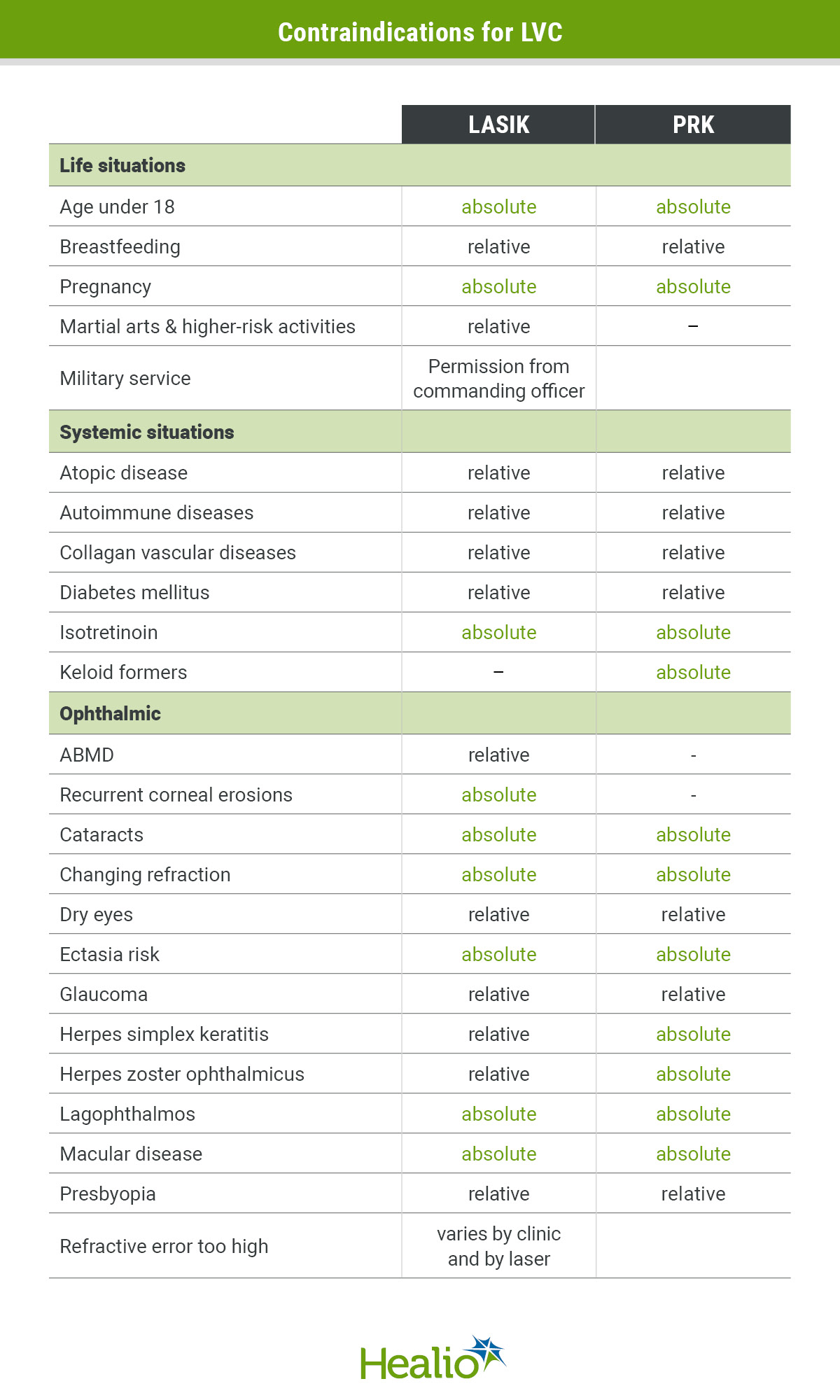BLOG: Be aware of systemic contraindications to LASIK, PRK
None of us likes to have to tell a patient, “You are not a good candidate for LASIK.” When you do find yourself in this situation, you want to be certain you’re right.

The eyes are intimately connected to the entire body, with a special connection to the cardiovascular system, the neurological network and the immune system. This 3-part series will cover absolute and relative contraindications to both LASIK and PRK as they relate to our patients: Part 1 concerned life considerations; part 2 covers systemic considerations, as listed below; and part 3 will cover ophthalmic conditions.

Isotretinoin. Few systemic situations pose an absolute barrier to laser vision correction (LVC); perhaps the most important is the use of isotretinoin. Isotretinoin is a synthetic vitamin A compound used for the treatment of severe acne, but it has many toxic ocular side effects, including anterior segment inflammation (possibly even altering refractive error by inducing ciliary body rotation), dry eye, photosensitivity, decreased dark adaptation and teratogenic ocular abnormalities.
Since isotretinoin is stored and persists in fat for long periods of time, many clinics prefer to wait a full year after discontinuation of this powerful drug — and even then, they carefully assess stability of refraction and the health of the ocular surface before proceeding.

Keloids. Some people have keloid-prone skin, which has a tendency to slowly grow raised scars much larger than the causative wound. This condition is considered to be an absolute contraindication to PRK, but LASIK can still be considered if the surgeon is willing.
Autoimmune and collagen vascular diseases. When PRK was first approved in the U.S., the FDA listed many autoimmune and connective tissue disorders as relative contraindications, including rheumatoid arthritis, systemic lupus erythematosus, Sjögren’s syndrome and spondyloarthropathies (Reiter’s syndrome and psoriatic arthritis, among others). The rationale was a theoretical risk of aberrant inflammation and healing responses; in addition, many of these diseases manifest in the eye as dry eye or uveitis.
There is still not much data to support or refute this reasoning, although in recent years we have noticed a trickle of studies supporting LVC in cases of well-controlled disease. On the other hand, a small number of case reports of corneal thinning, corneal melt, corneal ulcers, irregular healing and protracted keratitis after LVC underscore the importance of hesitancy in this population. Ultimately this will be the surgeon’s decision.
Atopy, or allergy, is another situation requiring care. Rarely are allergies a reason to avoid LVC, but they do increase the risk for diffuse lamellar keratitis (DLK) by an astounding sixfold (Boorstein et al.). DLK is a serious complication after LVC and can result in permanent loss of best-corrected vision.
We always watch our atopic patients very carefully during the first 3 days after LVC — the most likely time for onset of DLK — and in some cases will even consider pretreating with topical steroids. Because severe cases of DLK are treated with aggressive anti-inflammatory therapy, an atopic patient must be able to take oral steroids.
Diabetes mellitus represents a relative contraindication to LVC because of two factors: refractive instability from lenticular changes and poor wound healing due to decreased corneal innervation. These should not be major factors when the disease is well-controlled, but patients with poorly controlled diabetes are not good candidates for LVC of any kind.
In our next post, we’ll talk about ophthalmic situations that account for some of the most important contraindications to LASIK and PRK.
References:
- Boorstein SM, et al. Ophthalmology. 2003;doi:10.1016/s0161-6420(02)01287-3.
- Fraunfelder FT, et al. Am J Ophthalmol. 2001;doi:10.1016/s0002-9394(01)01024-8.
For more information:
Oliver Kuhn-Wilken, OD, is a staff optometrist at Pacific Cataract & Laser Institute in Tualatin, Oregon. Please email him with any comments, questions or requests for upcoming topics at oliver.wilken@pcli.com.
Collapse
